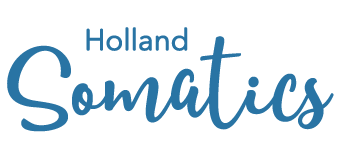Is Core Strength Really the Answer to Back Pain, or Are We Living in a World of Core Confusion?
Many people suffering from back pain have been told that the answer is to build up strength in their core muscles. Before you run to the gym, yoga or pilates studio, ask yourself one question. What if your core muscles are already strong, just not in the way you’re used to hearing about it?
What if you’re living in a virtual “tug of war” in your body, where the back and belly are literally fighting for control? Standing up from sitting can become a chore — as the back muscles and quads try to contract to stand you up, the belly muscles, including the hamstrings are still contracted and effectively “pulling” you back to your chair. It’s a tough situation to recover from by adding more muscle tension to the situation.
Once you start using your latissimus dorsi to stand you up (placing your hands on chair arms and pushing yourself up) you’re completely changing the normal way in which you would stand up, and most likely sitting will become more a part of your daily life. Once the lats become overworked and overly-tight, what will you use next to stand up? An automatic chair, perhaps.
At the beginning of our sessions, during assessment, we palpate muscles, especially in the back. I’ve yet to see a person who has sought help for back pain (and most have previously tried Pilates, yoga or strength training) come in with soft, tension-free back muscles. What I find most often is some degree of “hard to the touch” back muscles – most feel like steel, no bounce left and lots of hypertrophy, muscles pushing up from under the skin, what we see on the cover of muscle magazines as “healthy” muscles. That is the epitome of strength, right? Or is it really?
Along with that hypertrophy, you often see diminishing levels of flexibility, as muscular holding patterns set in and take over – and these muscles are holding tight as can be – in other words they are really good at their job and they are STRONGLY holding tight! They just are not good at what you would like them to do for you, such as stand you up easily and let you walk as far as you’d like.
Now imagine, you have that tightness in your back, but you don’t often feel the tension levels rising. We have much less sensory information coming up to the brain from the core muscles than other parts of the body. Often, it’s not until we’re in crisis that we even become aware of overly-tense muscles, unless you see a massage therapist, and they are all to happy to tell you about the tension in your body, and they’re right!
So, you seek help for weak abdominals. Now you’re on the path to building even more tightness in your body but now it’s in the front. Is that optimal? I don’t believe it is. During one class I taught, the manager of a local Pilates studio was in attendance. As I lead the class through Arch and Release, asking them to breathe deep into the belly and let your back slightly arch and belly come up toward the ceiling, she said out loud, “I can’t do this. I’ve learned to breathe through the sides of my ribs.” She had such a tight gut, her diaphragm was no longer taking its full journey through her body — less oxygen when inhaling, less expelling of carbon dioxide during exhaling. OK, so that’s a whole other topic, but you get the picture.
What’s the answer? Reset these background tension patterns that are running constantly in your brain/nervous system without your conscious consent. Learn how to naturally release tension in your core and back. Here’s a good way to start releasing your back, note that if you’re just beginning, don’t move as much as the model in the photo, rather lift only a bit and work your way up gradually.
Arch and Release, this movement actively lengthens your muscles through gentle, slow somatic movements combined with breathing. As you inhale, gently arch your back and then SLOWLY relax as you exhale. Try to count to 4-6 on the exhale release, the longer the release, the more your brain relaxes the muscles.

